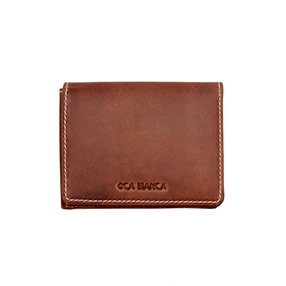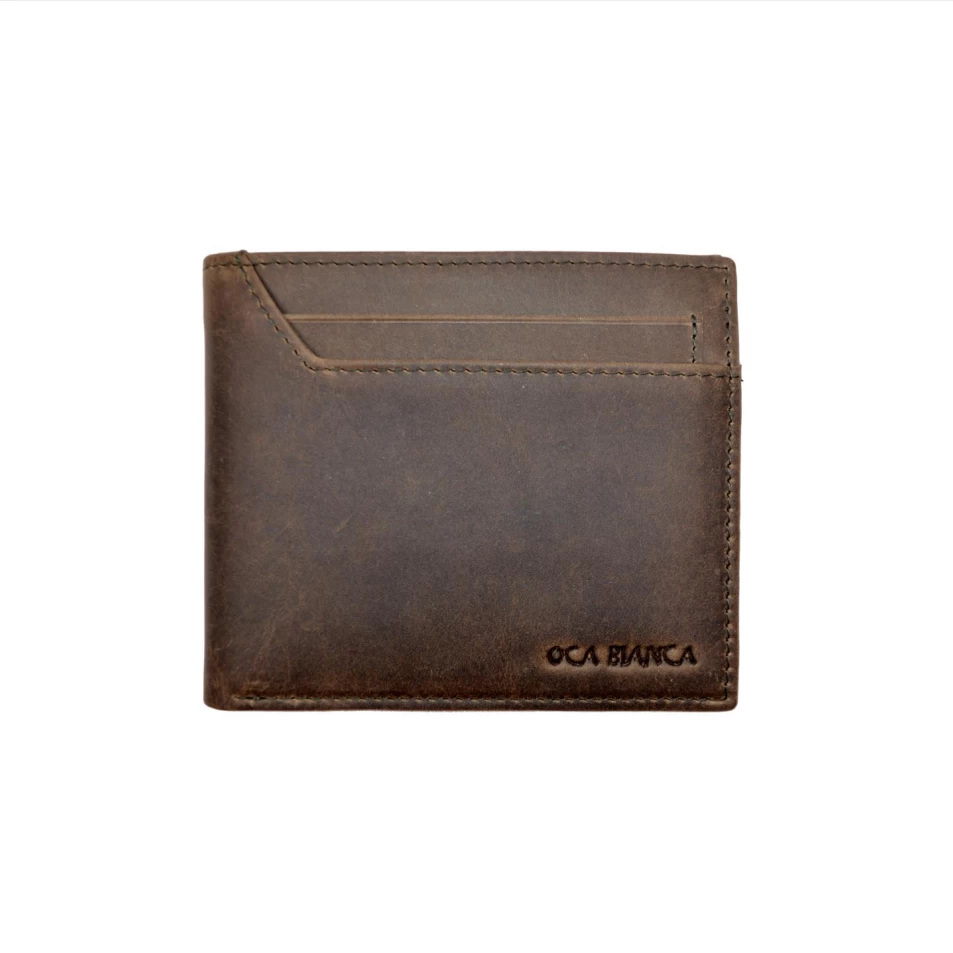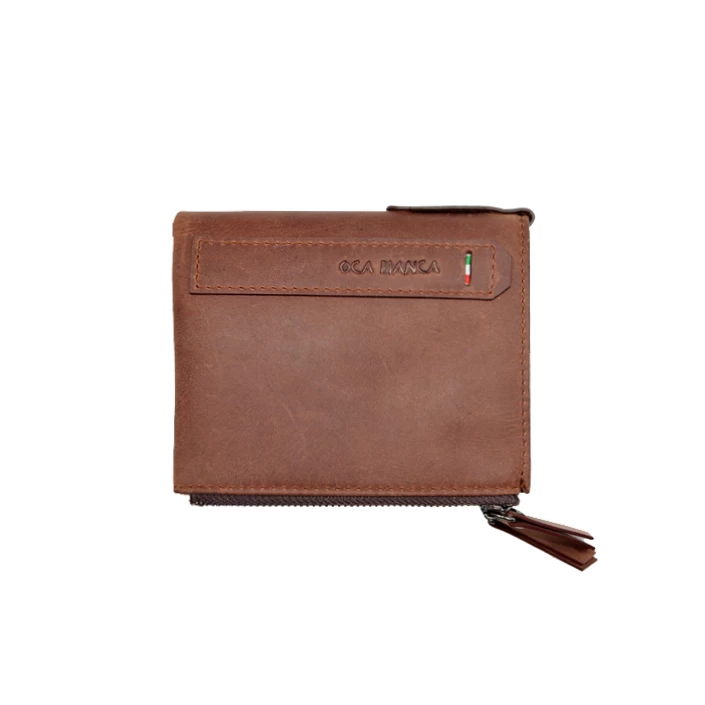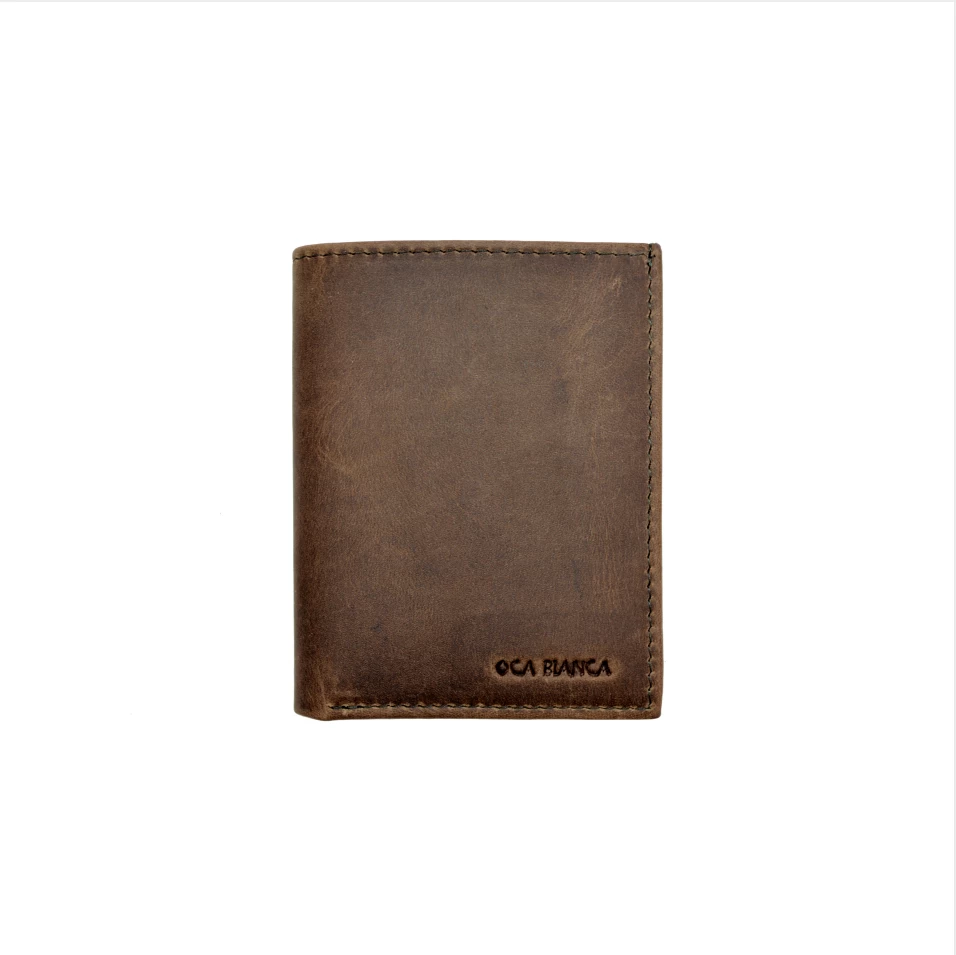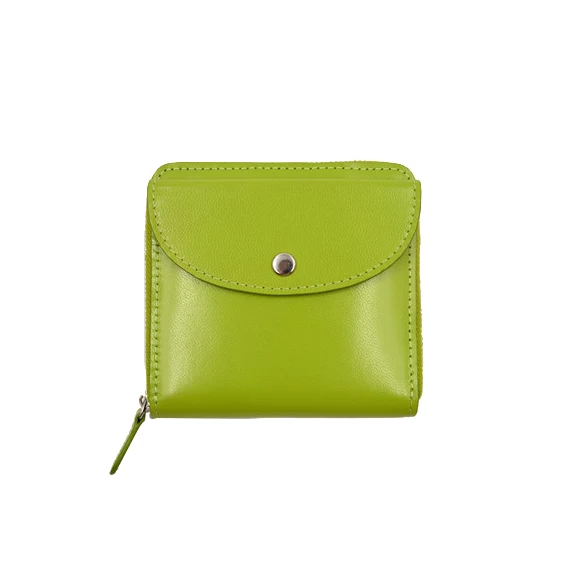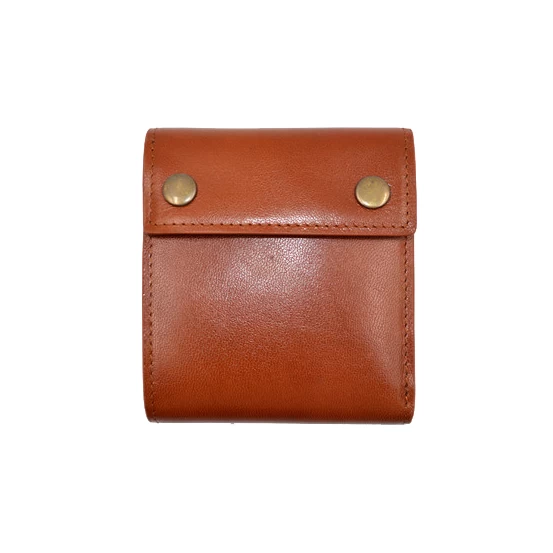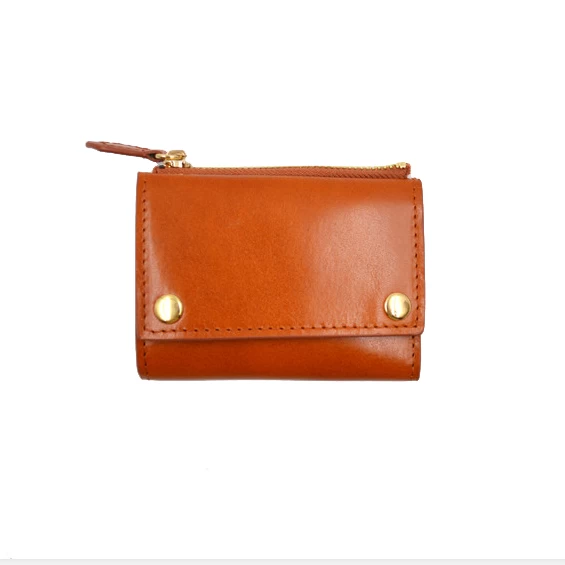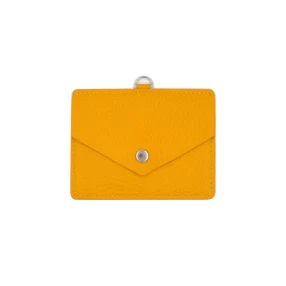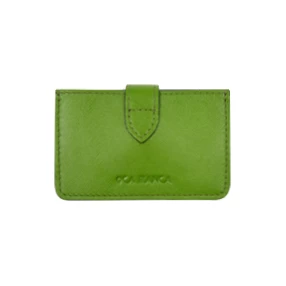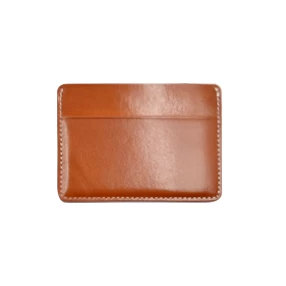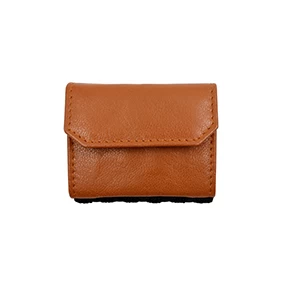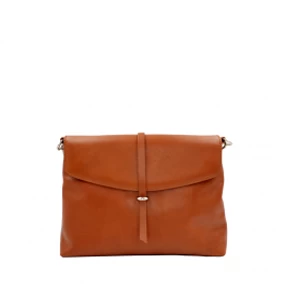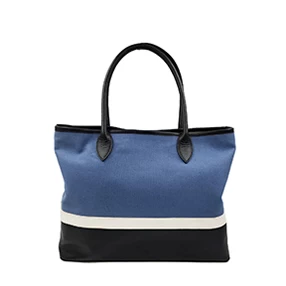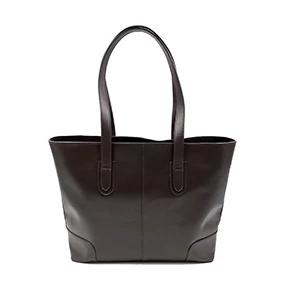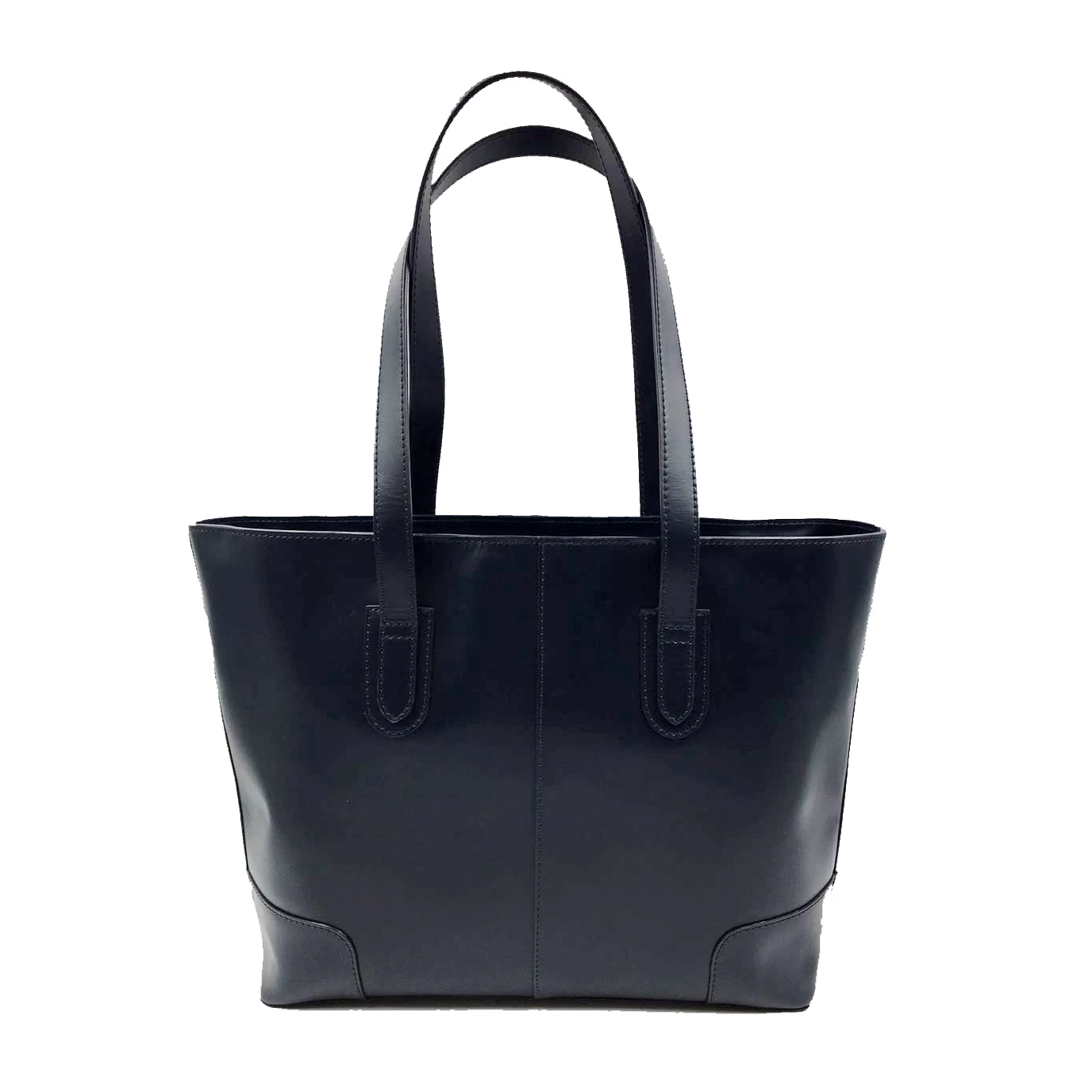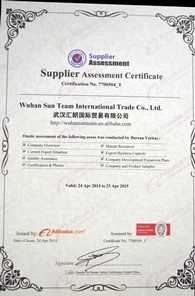Chapter 2: Mineral (chromium) tanning
Cara
www.walletwmazon.com
2017-06-19 10:18:35
The complexity, expense and time involved with tanning with vegetable tannins led, in 1858, to the development of using mineral tanning agents instead. The basic principle is the same, removing water molecules from the collagen and replacing them, but the process is much quicker using chrome which is the most popular mineral tanning agent today. The whole process can be automated and finished in a day, and the chrome ions displacing the water and binding with the collagen are much smaller than vegetable tanning molecules. This generally makes chrome tanned leather thinner and softer than vegetable tanned leather.
The process, however, is less natural than when using vegetable tannins. It involves first placing the hides in acidic salts to better make the chrome fit in between the collagen molecules – and then returning the hides to a normal pH level.
This requires the use of acids and other chemicals as well as the chromium sulphates themselves. If not properly managed, these will have a negative environmental impact, and the industry continues to be under pressure to “clean up” as more regulations are introduced.
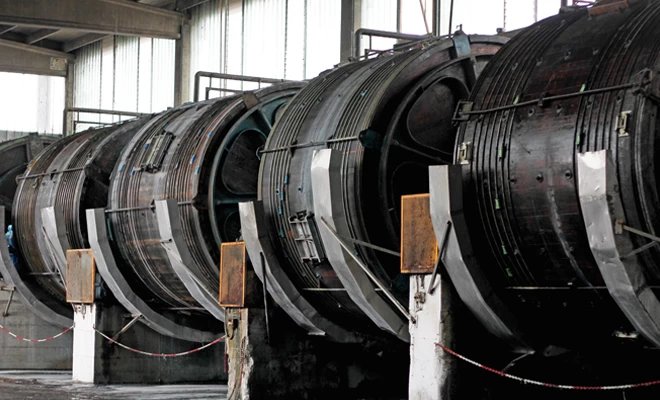
Uses and environment
Vegetable tanned leathers are generally biodegradable, but the tanning process requires the use of more water and more tanning agents than when chrome tanning. Chrome tanned leathers, on the other hand, cannot be recycled as such, but some companies now extract the chrome out of unused leather and resell the chrome to tanneries where it can be used again.
Today no less than about 90% of the world’s leathers are chrome tanned – partly due to the lower cost, but also because chrome tanned leathers are softer and less susceptible to water stains, making them preferable for clothing, such as jackets and gloves, and upholstery for, say, car seats.
Vegetable tanned leather continues to be associated with tradition and craft, but relatively few tanneries today have the capability to produce vegetable-tanned leather. The time and skill involved in its production make it an expensive material, reducing its demand. It is a thick and malleable leather making it ideal for goods like sturdy bags and belts.
Oh, and here’s a handy chart to make things a little easier…

The process, however, is less natural than when using vegetable tannins. It involves first placing the hides in acidic salts to better make the chrome fit in between the collagen molecules – and then returning the hides to a normal pH level.
This requires the use of acids and other chemicals as well as the chromium sulphates themselves. If not properly managed, these will have a negative environmental impact, and the industry continues to be under pressure to “clean up” as more regulations are introduced.

Uses and environment
Vegetable tanned leathers are generally biodegradable, but the tanning process requires the use of more water and more tanning agents than when chrome tanning. Chrome tanned leathers, on the other hand, cannot be recycled as such, but some companies now extract the chrome out of unused leather and resell the chrome to tanneries where it can be used again.
Today no less than about 90% of the world’s leathers are chrome tanned – partly due to the lower cost, but also because chrome tanned leathers are softer and less susceptible to water stains, making them preferable for clothing, such as jackets and gloves, and upholstery for, say, car seats.
Vegetable tanned leather continues to be associated with tradition and craft, but relatively few tanneries today have the capability to produce vegetable-tanned leather. The time and skill involved in its production make it an expensive material, reducing its demand. It is a thick and malleable leather making it ideal for goods like sturdy bags and belts.
Oh, and here’s a handy chart to make things a little easier…








